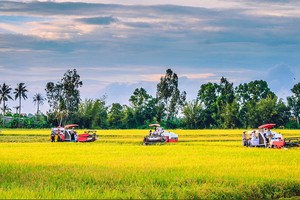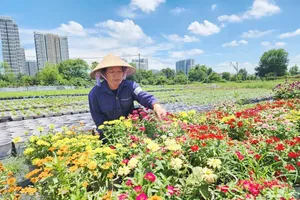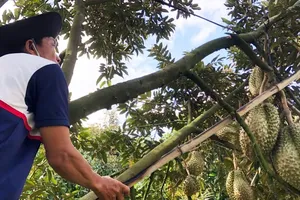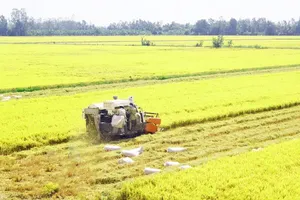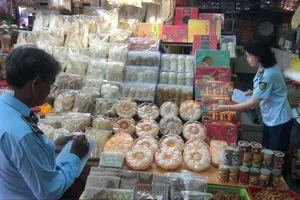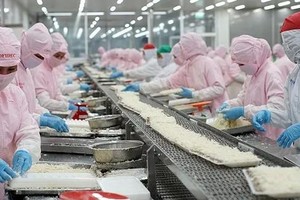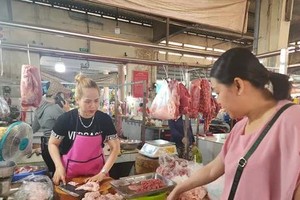The area under safe vegetables in HCM City topped 15,800 hectares last year, 18.9 percent up from 2011 when a programme to strengthen food security began, according to the city People’s Committee.

Customers look at a safe-vegetable product at a shop. The area under safe vegetables in HCM City topped 15,800 hectares last year. (Source: VNA)
The output last year shot up by 33.8 percent to 375,000 tonnes.
Under the programme, vegetables are now being grown in districts like Cu Chi, Binh Chanh and Hoc Mon in addition to traditional areas like Thanh Xuan Ward in District 12.
However, the localities have not zoned the new areas for vegetable farming, causing certain difficulties including obtaining Vietnamese Good Agricultural Practices (VietGAP) certification.
As of last year 763 co-operatives and individuals had been certified for VietGap quality.
Under a five-year programme on safe vegetable development at communes that are part of the national new rural area building project, 178 fields with a combined area of 741ha owned by 2,106 households have been cultivated to VietGap standards or using organic methods.
The VietGap standards help save 30 million VND (1,333 USD) per hectare per year on plant protection chemicals and fertilisers.
Nguyen Thi Le Thoa, Head of the Plant Protection Division’s office for management of food safety under the Department of Agriculture and Rural Development, said her agency stepped up surprise checks of farms and shops to detect the use or sales of banned chemicals.
Speaking at a recent forum on how food safety is being strengthened, she added that the raids had found several farmers violating food safety and hygiene regulations.
The People’s Committee report also said that 744 pig-farming households and 10 farms had obtained VietGap certification as of last year, and they supplied 168,000 pigs a year.
Safe shrimp cultivation is being undertaken in the two outlying districts of NhA Be and Can Gio, with 252 establishments farming a total area of 373.6ha and producing 2,988 tonnes a year.
The city has signed agreements with five provinces - Dong Nai, Binh Duong, Long An, Tien Giang, and Ba Ria-Vung Tau - for them to monitor safety and hygiene at farms since 70 percent of fruits and vegetables consumed in the city comes from there.



